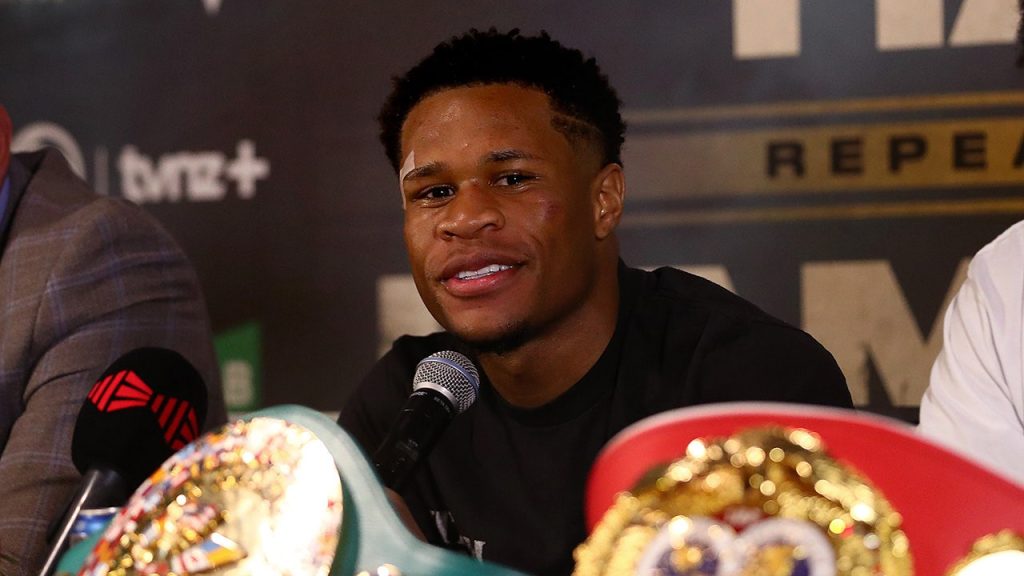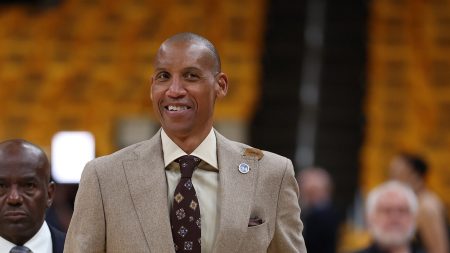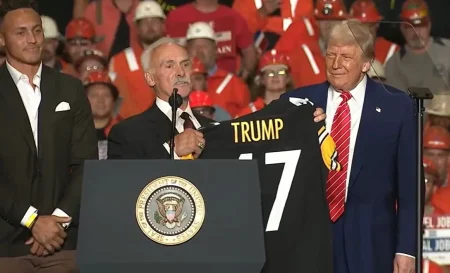Devin Haney, the American boxer, recently engaged in a public disagreement with Sylvester Stallone, the acclaimed actor renowned for his portrayal of Rocky Balboa, regarding Stallone’s comments on the current state of boxing. The dispute originated from a video circulating on social media featuring Stallone holding the boxing gloves he used in the original “Rocky” film, shot in the mid-1970s. In the video, Stallone commented on the gloves’ supposed similarity to those used by professional boxers during that era, highlighting their dangerous nature and suggesting that they were no longer permitted due to safety concerns. He further expressed a nostalgic sentiment for a time when, in his view, people were “tougher” and life wasn’t as “easy.”
Haney took exception to Stallone’s remarks, particularly the implication that boxing had become easier. He responded on X (formerly Twitter), criticizing Stallone’s boxing knowledge and emphasizing the actor’s non-expert status in the sport. Haney’s pointed retort highlighted the fictional nature of the “Rocky” movies, implying that Stallone’s perspective on the realities of boxing was skewed by his cinematic portrayal. This exchange underscores a broader discussion about the evolution of boxing, the perceived changes in its physical demands, and the role of popular culture in shaping public perception of the sport.
Stallone’s comments reflect a common sentiment that things were “tougher” in the past, a perspective often applied to various aspects of life, including sports. This nostalgia can stem from a number of factors, including a romanticized view of history, a tendency to focus on past hardships while overlooking contemporary challenges, and a perceived decline in certain values or qualities associated with resilience and grit. In the context of boxing, this nostalgic view might manifest as a belief that older generations of fighters were inherently tougher, faced greater risks, or adhered to a more rigorous training regimen.
Haney’s counterargument, however, emphasizes the distinction between the fictional world of “Rocky” and the realities of professional boxing. While the “Rocky” films undeniably capture the spirit and drama of the sport, they are ultimately works of fiction designed to entertain. Haney’s response serves as a reminder that the challenges faced by real-life boxers extend far beyond the scripted narrative of a movie. The rigorous training, physical demands, and potential for serious injury are aspects of the sport that are often glossed over in Hollywood portrayals.
The exchange between Haney and Stallone also touches upon the evolution of boxing regulations and safety measures. Stallone’s observation about the gloves used in the original “Rocky” film highlights a shift towards prioritizing fighter safety. The lighter, less padded gloves of the past, while potentially delivering more powerful punches, also increased the risk of serious injury. Modern boxing regulations, including glove specifications, weight classes, and medical oversight, have been implemented to mitigate these risks and protect the health and well-being of athletes.
Furthermore, the debate about the “toughness” of different eras in boxing is complex and multifaceted. While training methods and equipment have evolved, the core demands of the sport remain physically and mentally grueling. Modern boxers still endure rigorous training regimes, face formidable opponents, and risk serious injury with every bout. The specific challenges may have shifted, but the fundamental requirements of skill, discipline, and resilience remain constant. Haney’s response implicitly acknowledges this, suggesting that while the specifics may differ, the inherent difficulty of boxing has not diminished.
In conclusion, the public exchange between Devin Haney and Sylvester Stallone sparked a conversation about the evolution of boxing, the role of Hollywood in shaping its perception, and the ever-present debate about the “toughness” of different eras in the sport. While Stallone’s comments reflected a nostalgic view of the past, Haney’s response grounded the discussion in the realities of professional boxing, emphasizing the distinction between fiction and the genuine challenges faced by athletes in the sport. The incident serves as a reminder that while popular culture can romanticize and dramatize aspects of boxing, the inherent demands and risks of the sport remain significant, regardless of the era. The evolution of regulations and safety measures reflects an ongoing effort to protect fighters while preserving the integrity and excitement of boxing.










